
In Catholicism, an abbess is the female superior of a community of nuns, which is often an abbey.
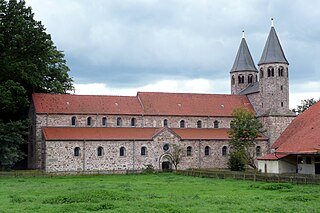
Bursfelde Abbey is a former Benedictine monastery located in Bursfelde, a hamlet which for administrative purposes is included in the municipality of nearby Hannoversch Münden in Lower Saxony, Germany. Today the abbey church and its estate cover a site of approximately 300 hectares which is administered by the Klosterkammer Hannover, a body that operates under the auspices of the Lower Saxony Ministry for Arts and the Sciences to look after reassigned or disused ecclesiastical buildings and other heritage properties in the region. The legal owner of the Bursfelde Monastery Complex is the Evangelical-Lutheran Church of Hanover.
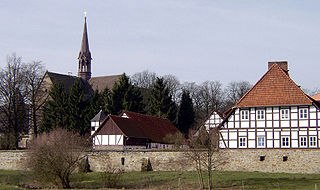
Loccum Abbey is a Lutheran monastery in the town of Rehburg-Loccum, Lower Saxony, near Steinhude Lake.

Walkenried Abbey was a Cistercian abbey located in the village of Walkenried in Lower Saxony, Germany. Founded in 1127 on the southern rim of the Harz mountain range, the remnants of the monastic complex since 2010 are part of the Upper Harz Water Regale World Heritage Site.

Heggbach Abbey was a Cistercian nunnery in Heggbach, now part of the municipality of Maselheim in the district of Biberach, Baden-Württemberg, Germany.
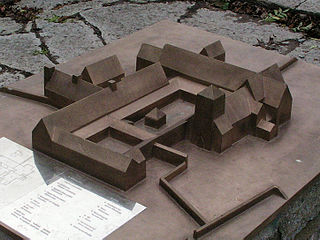
Vreta Abbey, in operation from the beginning of the 12th century to 1582, was the first nunnery in Sweden, initially Benedictine and later Cistercian, and one of the oldest in Scandinavia. It was located in the present-day municipality of Linköping in Östergötland.

Nonneseter Abbey was a Cistercian nunnery in Bergen, Norway. A small part of the former abbey church remains in use as a chapel, the Nonneseter kapell.

Marienstern Abbey was a Cistercian nunnery in Mühlberg in Brandenburg, Germany. Since 2000 a small community of the Claretian missionary brothers have lived in the former abbey premises.
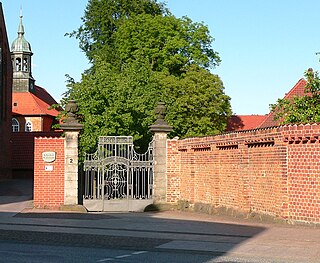
Walsrode Abbey in Walsrode, Germany, is one of the historic monasteries of Benedictine nuns on the Lüneburg Heath in North Germany which are collectively known as the Lüneklöster. Today it is a Lutheran women's convent that is maintained by the Hanover monastic chamber.
Ebstorf Abbey is a Lutheran convent of nuns that is located near the Lower Saxon town of Uelzen, in Germany.

Lüne Abbey is a former Benedictine nunnery in the Lower Saxon town of Lüneburg. Today it is a Protestant Lutheran convent and is managed by the Klosterkammer Hannover. The current abbess is Reinhild Freifrau von der Goltz.

Isenhagen Abbey is a convent in Hankensbüttel in the district of Gifhorn in the German state of Lower Saxony. It was a nunnery founded by the Cistercian order but is now a Lutheran women's convent. It is managed by the monastic chamber in Hanover.
Medingen is a village in the borough of Bad Bevensen in the German state of Lower Saxony. In the 14th century it was called Zellensen.

Medingen Abbey or Medingen Convent is a former Cistercian nunnery. Today it is a residence for women of the Protestant Lutheran faith near the Lower Saxon town of Bad Bevensen and is supervised by the Monastic Chamber of Hanover. The current director of the abbey (Äbtissin) is the art historian Dr Kristin Püttmann.
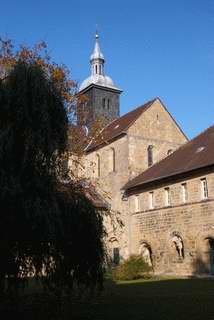
Mariental Abbey, in the present-day municipality of Mariental in Lower Saxony, Germany, is a former Cistercian monastery founded in 1138, now used and owned by a Lutheran congregation of the Evangelical Lutheran Church in Brunswick.

The Abbey of the Holy Cross in Rostock, Germany, was founded in the 13th century by Cistercian nuns. It is the only fully preserved abbey in the city. The complex includes the former abbey church which is used today as the University Church (Universitätskirche). The remaining former convent buildings house the Museum of Cultural History for the city of Rostock.

Sonnefeld Abbey is a former Cistercian nunnery in Sonnefeld in Bavaria, Germany. The former abbey church, or Klosterkirche, is now an Evangelical Lutheran parish church.
The Klosterkammer Hannover, based in Hanover, is a special authority within the scope of the Lower Saxony Ministry of Science and Culture. It administers former ecclesiastical, mediatized property and maintains churches and convents. In addition, as a foundation body (Stiftungsorgan), it administers four independent foundations under public law.



















